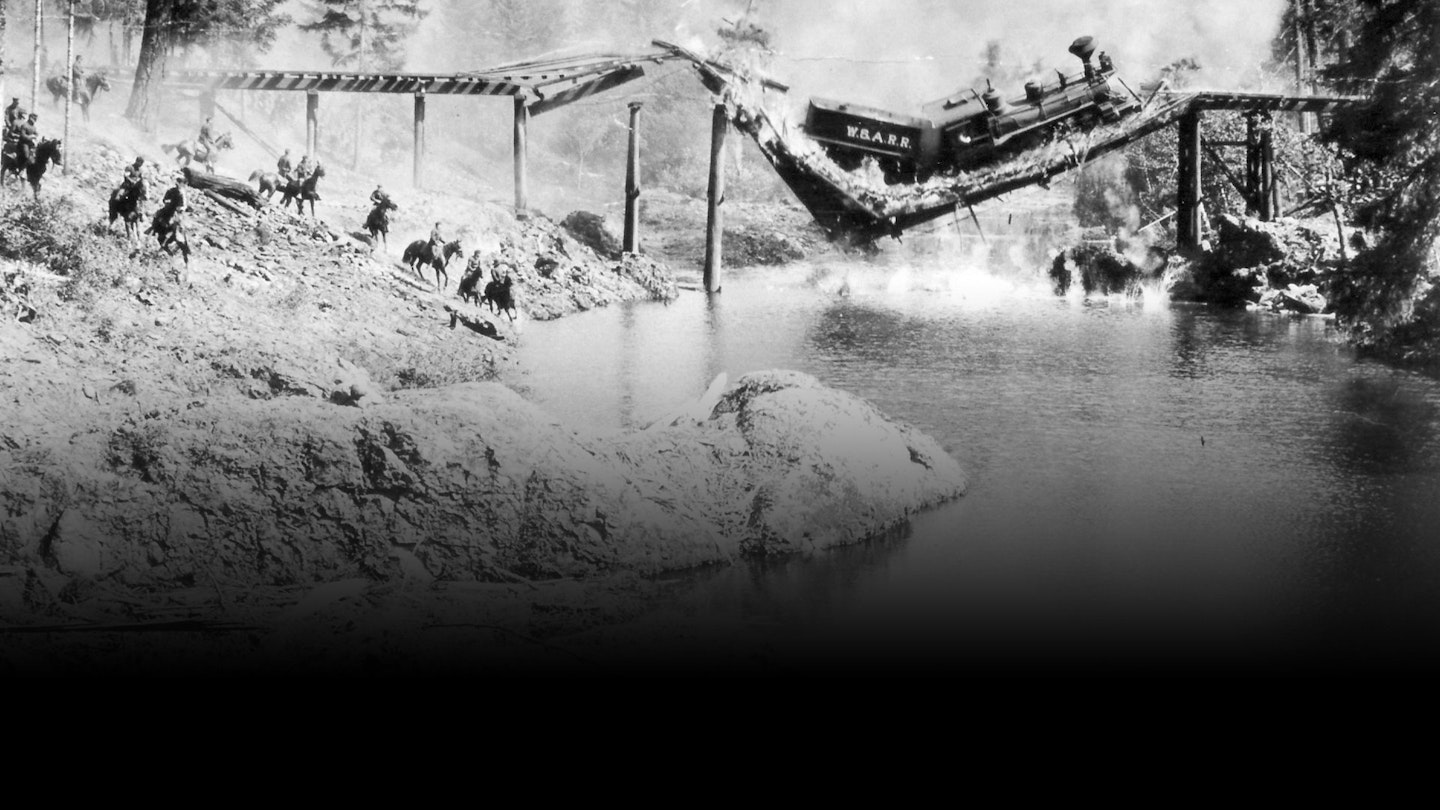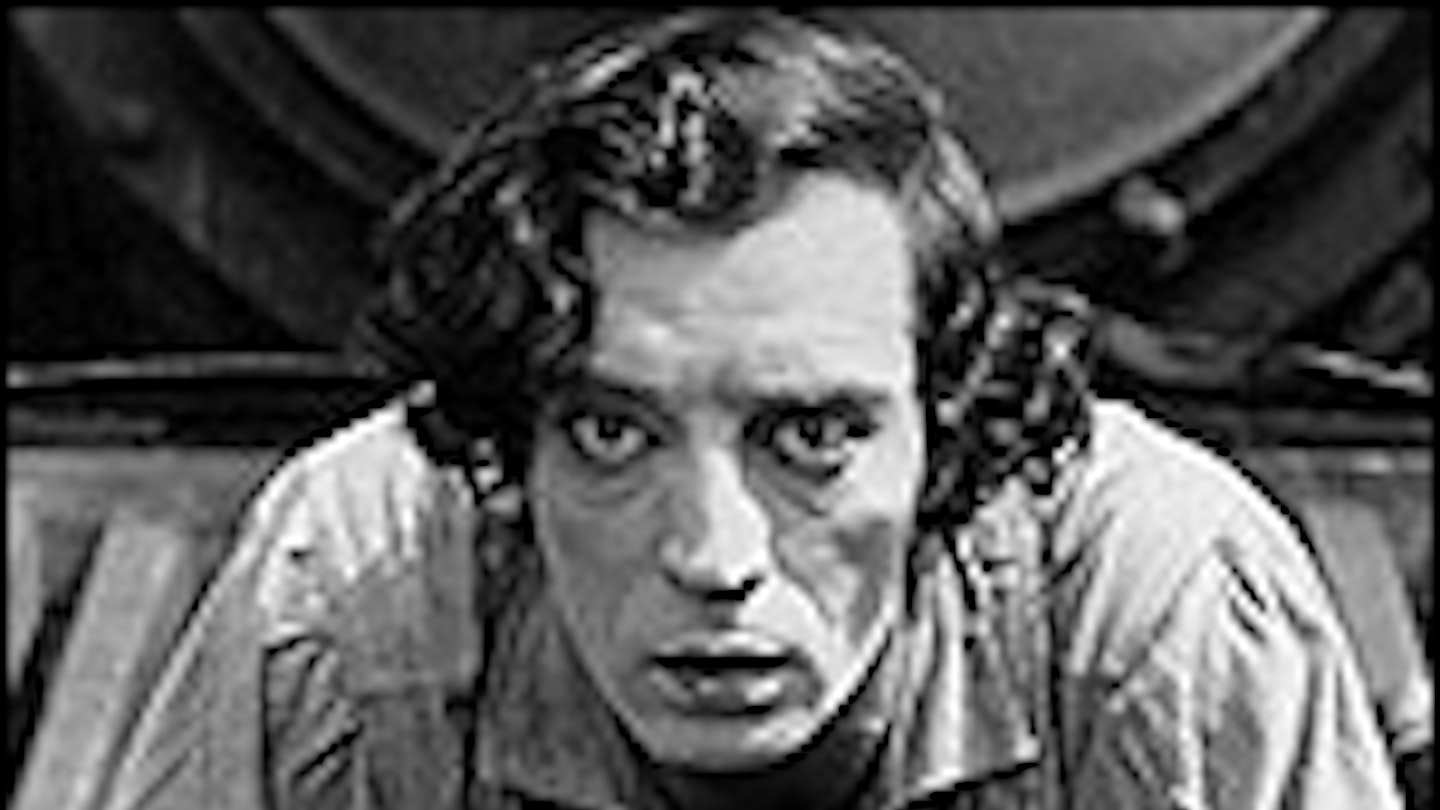"Love, locomotives and laughs," promised the posters for Buster Keaton's Civil War epic. It was a succinct and accurate summary. Buster, on incomparable form, plays dependable railroad engineer Johnny Gray, a man who is devoted to two things: his beloved locomotive, The General, and his sweetheart Annabelle (Mack). When war breaks out Johnny is keen to impress his girl by joining the Confederate army. Deemed more use as an engineer, however, he is rejected. Annabelle believes he has shirked his manly duty and refuses to speak to him. A year later a band of enemy raiders steal The General and plan to drive it into Union territory, destroying Confederate supply lines as they go. Outraged, Johnny leaps into the cab of another locomotive and sets off in hot pursuit, unaware that Annabelle is being held prisoner on board the stolen train.
What follows is, arguably, one of the greatest screen comedies ever made. In advance of a ritzy New York premiere, The General was previewed at the California Theatre in San Jose, California, on October 22,1926. It was a star-studded event and, fittingly, the filmfolk steamed into town aboard the Lark, the legendary all-Pullman service that plied the overnight route from Los Angeles to Portland, Oregon. The Hollywood crowd were put up at the luxurious Sainte Claire Hotel where a mood of cautious optimism can well be imagined.
There was a lot riding on the San Jose preview. The General was Keaton's pet project and he had lavished enormous amounts of time and money on it. The film, among the most expensive of its day, was shot entirely on location in Oregon, which offered both magnificent scenery and stretches of the single-gauge railway track needed for the antique locomotives. The wood-burning engines were authentic in every detail, as was everything else about the production. At Buster's behest, no expense was spared. The train that crashes through a burning bridge into the riverbed below was a genuine Civil War locomotive. The scene was filmed in a single take and the mangled engine remained where it lay for many years, becoming a local tourist attraction.
Keaton based the look of the film on the haunting Civil War photographs of Mathew Brady, just as Spielberg took visual cues from Frank Capra's still photography and George Stevens' 16mm footage of WWII for Saving Private Ryan. The results are astounding, without doubt the most evocative and authentic depiction of the Civil War on film — D.W. Griffith's The Birth Of A Nation doesn't come close, and Victor Fleming's Gone With The Wind is a travesty by comparison.
Keaton had made features before, but never anything on this scale. It was still a comedy of course and his timeless everyman persona and supreme talents as a physical comedian shone through. But the slapstick was more gentle than usual and played out against an extravagant backdrop. The danger, and Buster knew it, was that the majestic locations, the chase scenes and the historical setting would overshadow the very thing the public came to see: him. It was a gamble, and it did not pay off. The morning after the out-of-town screening, Josephine Hughston in the San Jose Mercury-Herald wrote: "There is a feeble plot of a sort and considerable rather pointless comedy, although some of it is really funny."
Film criticism was not, as you can see, the arena of sparkling wit and insight it has since become. Nevertheless, Ms. Hughston's review, an echo of the broader audience reaction for all its clumsy phraseology, was enough to send Keaton and United Artists into a panic. Fearing that the New York premiere would elicit a similar yet more damaging response, UA took the unprecedented step of releasing the film in Japan. It debuted in December 1926 under the title Keaton, Shogun and did good business. However, it was a brief respite. The General finally opened in the United States to critical indifference and disappointing box-office.
Although far from the disaster historians have proclaimed it, the film's tepid reception must have been a crushing blow to Keaton. For him it had been a labour of love and he had poured his heart and soul into it. Shortly after The General was released he sacrificed his independent status for a contract with Metro-Goldwyn-Mayer. It was the worst decision of his career. Selling his soul to producer Joe Schenck (whose brother Nicholas ran MGM) Keaton was forced to stand by while the studio systematically shut him out of the creative process. It was a desperately unhappy union and lead directly to Keaton's battle with the booze (a battle, it is seldom noted, that he won against insuperable odds).
Now that The General has taken its rightful place in the pantheon, it's difficult to see why contemporary audiences found it so easy to resist. The gags don't come as thick and fast as pie-in-the-face aficionados might have liked, but when they do they are perfectly choreographed and impeccably timed. And Keaton's nimble stunt work was never better. The Civil War setting was a significant stumbling block. The conflict remained in living memory and mining it for laughs was looked on as rubbing salt into wounds. Even so, Buster was careful not to address political issues — unlike Griffith, whose Birth Of A Nation was repulsively biased. The most credible explanation is that audiences were simply put off by the low ratio of gags to action. If so, in search of a few jokes, they tossed aside a masterpiece, the magnum opus of a man who, when Chaplin's sentimental crown finally topples, may well emerge as the finest filmmaker of the silent era. In which case, they fully deserved both the execrable The Jazz Singer and The Great Depression.

